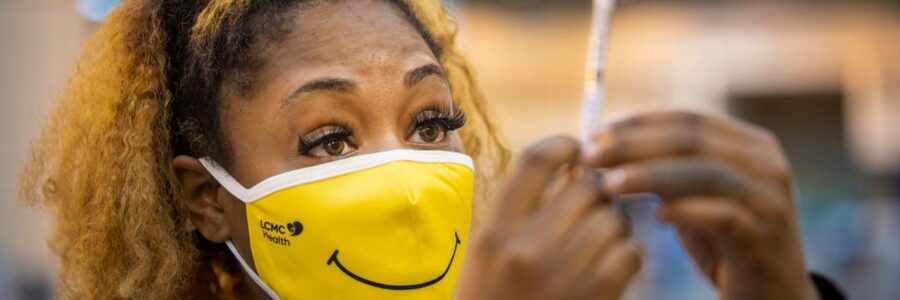
Covid 19 coronavirus: Stronger recovery – OECD lifts world economic outlook
The Organisation for Economic Co-operation and Development (OECD) has boosted expectations for a global recovery in 2021, citing the global vaccine roll-out and the enormous US stimulus package.
The OECD now forecasts global economic growth of 5.6 per cent for the year, up from a forecast of 4.2 per cent in December.
“Global economic prospects have improved markedly in recent months, helped by the gradual deployment of effective vaccines, announcements of additional fiscal support in some countries, and signs that economies are coping better with measures to suppress the virus,” the OECD’s March Economic Outlook report says.
It now forecasts that global output will rise above the pre-pandemic level by mid-2021, with 4 per cent economic growth forecast for 2022.
The report highlights the risk of inflation taking hold with the price of food and other commodities rising around the world.
The OECD didn’t publish new projections for New Zealand – which falls outside the G20 group of the world’s richest nations.
But it forecasts Australia to grow at 4.5 per cent, up from a forecast of 3.2 per cent in December.
“The economic impact of the pandemic and its aftermath remains well contained in many Asia-Pacific economies, reflecting effective public health measures, and the significant regional boost provided by the upturn in industrial activity and the rebound in China,” the report says.
It sees the growth rate for the G20 at 6.2 per cent – up an earlier forecast from 4.7 per cent.
Despite the improved global outlook, the OECD forecasts output and incomes in many countries will remain below the level expected prior to the pandemic at the end of 2022.
“The rebound has been relatively fast in several large emerging-market economies,’ it said.
“Activity moved above pre-pandemic levels in China, India and Turkey, helped by strong fiscal and quasi-fiscal measures and a recovery in manufacturing and construction.”
“Output shortfalls remained relatively mild in many Asia-Pacific economies,
including Australia, Japan and Korea, reflecting strong and effective containment measures, government support and the broader regional revival in manufacturing.”
In new forecasts released this week, Sydney based Capital Economics downgraded its outlook for New Zealand – from an already bullish 5.5 per cent to just 5 per cent.
Economist Marcel Thieliant cited ongoing economic disruption from closed borders which he forecast will ultimately cost New Zealand about 2 per cent of GDP across the two year pandemic period.
“The slow progress in rolling out vaccines in New Zealand means that its border may only be reopened by the end of this year,” he said.
“With net migration boosting population growth by around 1 percentage point per annum before the virus struck, we’ve lowered our forecast for 2021 GDP growth from 5.5 per cent to 5 per cent.
However some of that growth would just be displaced to 2022.
“With more of the vaccine boost to activity happening next year rather than this year, we’ve lifted our 2022 forecast from 3 per cent to 3.3 per cent,” he said.
“That would still be a good outcome,” he said, “As it would imply that per capita GDP would not be any lower by the end of next year than if the pandemic had never happened.”
As a net exporting nation New Zealand also looks set to benefit from rising commodity prices.
“A faster-than-expected recovery in demand, especially from China, coupled with shortfalls in supply, has pushed up food and metals prices considerably, and oil prices have rebounded to their average level in 2019,” the OECD said.
That was also lifting expectations of future inflation, particularly in financial markets.
“Headline inflation has recently risen in many advanced economies, and remains high in some emerging-market economies, in part due to jumps in commodity
prices and past currency depreciation.”
Meanwhile, the OECD warned of downside risk if international conflict slows the vaccine roll-out.
“National policy efforts need to be accompanied by greater global co-operation and funding to ensure adequate and timely availability of affordable vaccines throughout the world,” the report said.
“At present, the supplies of vaccines for the poorest countries, and the funds committed to the COVAX initiative, remain well below what is required if vaccinations are to be provided to all in need.”
“Failure to ensure the global suppression of the virus raises the risk that new, more threatening mutations appear, with some restrictions on mobilityhaving to remain in place.”
Source: Read Full Article
/cloudfront-ap-southeast-2.images.arcpublishing.com/nzme/5TV3VUQTHRCAWKHJMP4XKPFXFY.jpg)
/cloudfront-ap-southeast-2.images.arcpublishing.com/nzme/W4GXSDI6NDQUJRLG35TANC564M.jpg)